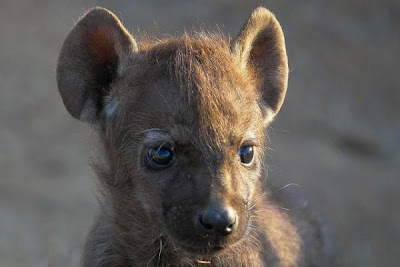Furry children desert
Now you will see the unusual animals that belong to the species to adapt to the challenging environment in the desert.Such small, fluffy and clumsy, but they live in such a harsh place.
Not the best place to live, you might say. It turns out no, they feel comfortable with.
Kangaroo jumper horde. This little pest lives in North America. Female can produce up to 15 babies a year. One of the biggest threats they face - the loss of their natural habitat due to climate change.
The African wild dog. These cute puppies are known as "painted dogs" because of their fuzzy picture on the body. The animal is the largest representative of canids in Africa. Unfortunately, due to overcrowding of the African wild dog - endangered.
Gazelle. Little Gazelle, curious to look into the camera lens. It seems that the ears and eyes are disproportionately large, but when the gazelle gets older, it will look more harmonious. These kids will be under strict supervision of the parent within 4 months. Caracal (caracal). This cute kitty is not tame animal. With tufted ears, she looks like a cat (often referred to as the Persian, Egyptian and African Lynx), but most scientists now believe that judgment wrong. Caracal is more closely associated with the African golden cat. Hyena. This hyenas, which is widely known for his laughter. Recent studies have shown that the IQ is the same as hyenas and primates.
Meerkats. these amazing animals meerkats, which we have previously been told to attract the attention of even the most indifferent people, once they get in the hind legs, and then, falling asleep. Ocelot Ocelots come from South America, Central America and Mexico. Ocelots have been classified as endangered from 1972 to 1996. Beginning in 2008, their status was upgraded to "least concern." One of the factors contributing to their low abundance may be their slow reproduction cycle (mother can give birth to only one of the first kitten).
Gazelle. Little Gazelle, curious to look into the camera lens. It seems that the ears and eyes are disproportionately large, but when the gazelle gets older, it will look more harmonious. These kids will be under strict supervision of the parent within 4 months. Caracal (caracal). This cute kitty is not tame animal. With tufted ears, she looks like a cat (often referred to as the Persian, Egyptian and African Lynx), but most scientists now believe that judgment wrong. Caracal is more closely associated with the African golden cat. Hyena. This hyenas, which is widely known for his laughter. Recent studies have shown that the IQ is the same as hyenas and primates.
Meerkats. these amazing animals meerkats, which we have previously been told to attract the attention of even the most indifferent people, once they get in the hind legs, and then, falling asleep. Ocelot Ocelots come from South America, Central America and Mexico. Ocelots have been classified as endangered from 1972 to 1996. Beginning in 2008, their status was upgraded to "least concern." One of the factors contributing to their low abundance may be their slow reproduction cycle (mother can give birth to only one of the first kitten).










